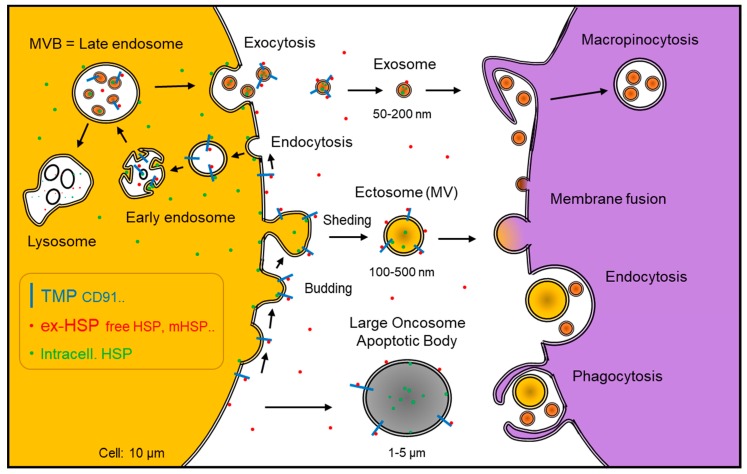Figure 1.
Extracellular, vesicular, and membrane heat shock proteins (HSPs). Extracellular vesicles (EVs) are often a heterogeneous mixture of exosomes, ectosomes (also known as microvesicles, MVs), oncosomes, large oncosomes, and apoptotic bodies. Exosomes are secreted via membrane fusion of multivesicular bodies (MVBs), thereby intraluminal vesicles (ILVs) are exocytosed (top left). HSP90 was shown to mediate MVB-to-plasma-membrane fusion. Distinctively, the shedding of the plasma membrane generates ectosomes (center). Cell-free, vesicle-free HSPs can be released from cells upon cell damage and stress (the so-called alarmin or chaperokine). Transmembrane proteins (TMP) such as CD91 can keep binding of HSPs on the surface of EVs and cells (blue bars and red balls). Membrane-surface HSPs (mHSP) are known as tumor antigens (red). Intracellular HSPs can be kept bound to the intracellular domains of the TMPs, such as epidermal growth factor receptor (EGFR) family members on the cells and EVs. EVs are often taken up by recipient cells in a variety of ways such as endocytosis, macropinocytosis, membrane fusion, and phagocytosis (right).

